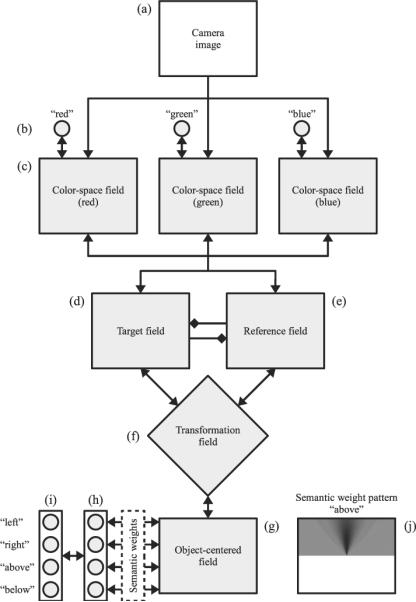Figure 2.

Architecture overview. The camera image (a) is the primary input to our mechanism. All elements shown in gray below it are dynamic neural structures: Gray circles are discrete nodes representing color terms (b), spatial relations (h), or spatial terms (i) that follow the same dynamic principles as the fields. Gray rectangles (c, d, e, and g) are dynamic neural fields defined over a two-dimensional space. The transformation field (f) is a higher dimensional dynamic neural field. Excitatory interactions between elements are indicated by arrows. These interactions are typically bidirectional in our architecture, shown as double arrows. Diamond-shaped links (d and e) represent inhibitory projections. The connections between the object-centered field (g) and the spatial relation nodes (h) depend on custom semantic weights, shown exemplarily for the above relation (j). The semantic weight patterns describe how well a certain position in the object-centered field matches the meaning of a spatial term (darker colors mean higher weights).
